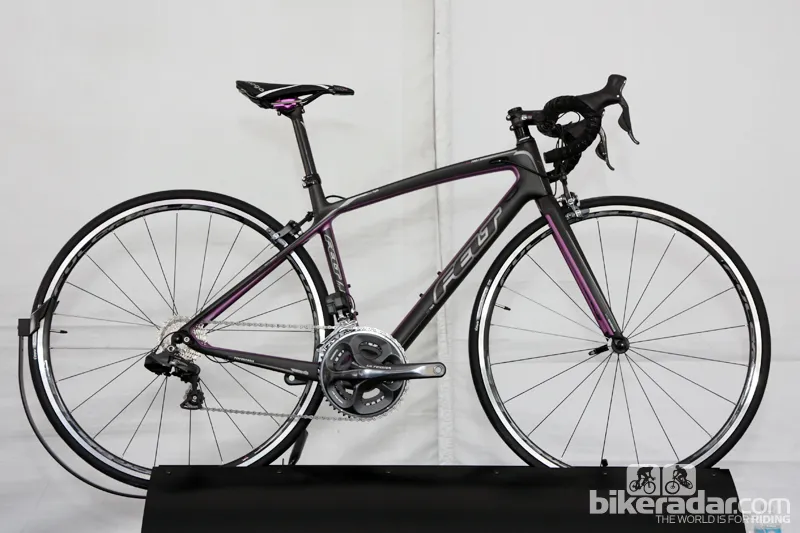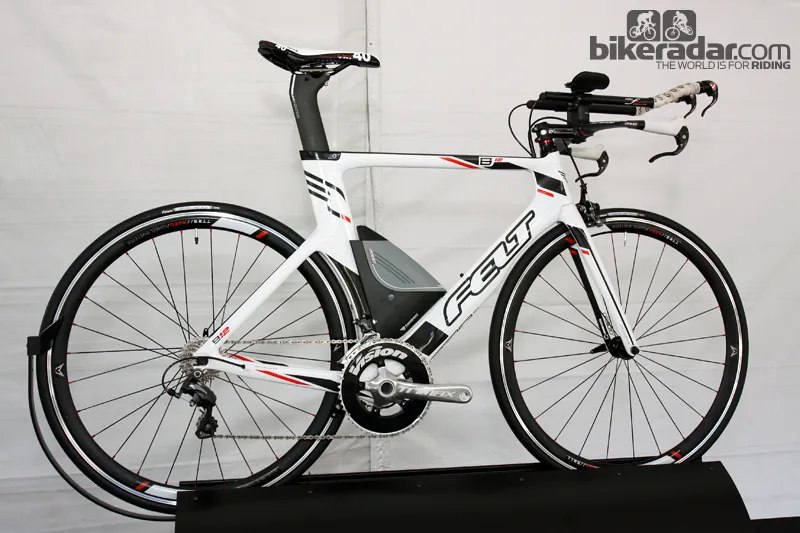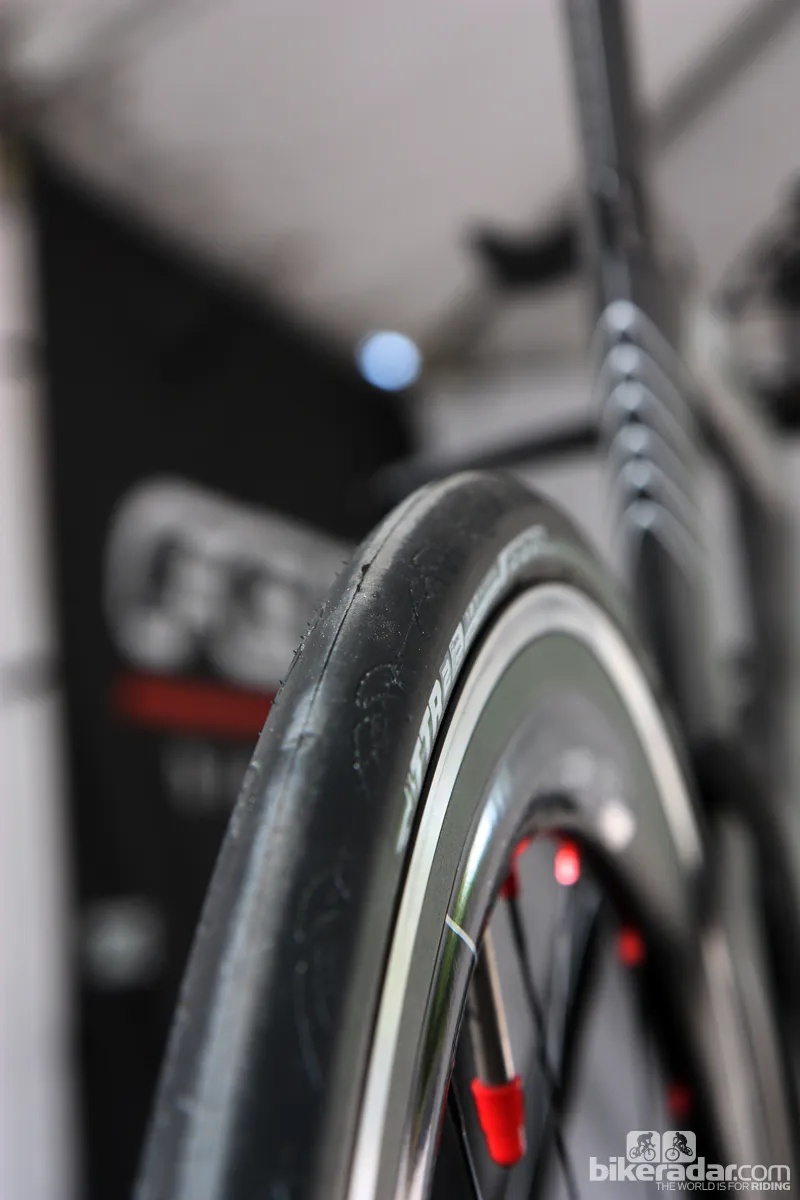A couple of years ago, Felt launched their superb F-series range of bikes. They're continuing with that momentum for 2013, applying the same lessons to their popular Z range of endurance bikes.
Elsewhere, the long-running AR retains its sleek, aerodynamic lines but gets a major interior overhaul. And – finally – there's a full range of disc-equipped cyclo-cross bikes that will be delivered well in advance of this year's season.
A zippier Z
The biggest change on the road comes in the form of Felt's comfort-oriented Z range, which gets all-new size- and gender-specific frames for 2013. Gone are the old kinked and stepped frame tubes, with their variety of flares and ribs. In their place is a smoother and more organic form, using lessons learned from the flagship F-series.
While the F emphasizes stiffness and light weight, however, the Z is still more comfort oriented. The tubes are more trapezoidally shaped, in contrast to the F's rounder forms. There's also a prominent rib running along the widths of the top and head tubes, shown below:

According to Felt director of research and development Jeff Soucek, those features make the new Z 25 percent stiffer torsionally and side-to-side. He also claims that the bike will be more comfortable over bumps than before. Frame weight has dropped by about 50g, too.
Rear end construction is very similar to the F, with a continuous tubular form maintained from the seat tube through the seat stays, chain stays and new carbon dropouts. According to Felt, this provides a livelier ride than the old plug-and-play setup.
InsideOut internal and external molding techniques – again borrowed from the F bikes – yield cleaner and more efficiently compacted tube walls and intersections.
Additional features include tapered head tubes on all carbon models (and even the new 2013 Z85 alloy frame), BB30 shells on upper-end models and slick internal cable routing that can be used with electronic or mechanical drivetrains.

Z frames with electronic drivetrains will use a rubber plug in place of the BB cable guide
Emphasizing the fact that Felt don't intend to pigeonhole the Z as a 'comfort bike' is a new Z1 flagship model. It's built with an 840g frame, Shimano Dura-Ace Di2 group and Mavic Ksyrium SLR wheels for US$10,329.
Nor have Felt ignored the women's-specific ZW range, either. It gains the same design features and benefits as the standard Z but with downsized tubing diameters, 'softer' joints and size-specific steerer tube diameters. This should provide consistent ride quality for lighter and smaller riders.

The women's-specific ZW range only differs from the standard Z where it really matters
Revamped AR goes on major diet
Felt were one of the first mainstream companies to delve into the aero road market with the original AR. While the 2013 version retains the same external silhouette, and aerodynamic performance, updated molding processes and carbon fiber materials have trimmed the frame weight down dramatically, and also improved ride quality.
The key change is the use of Felt's InsideOut internal and external molding processes at the bottom bracket, head tube and seat stays. This removes most of the foam and filler material inside the old bike's conventionally bladder-molded structure.

Shaping around the AR's seat cluster is reminiscent of Felt's DA TT bike
Due to the increased compaction, tube walls are now thinner and more consistent. Plus, there's less resin remaining inside the fiber plies.
As a result, weight has dropped from 1,400g to a much more competitive 1,050g, making the AR more appealing on hilly terrain where mass is more of a factor. Likewise, Felt say the more hollowed-out interior structure makes the 2013 version both more comfortable and livelier.
Turbo-charged F2
Felt haven't left the impressive F-series alone, either. It focuses on the more traditional stiffness and weight performance metrics instead of aerodynamics.
Most notably, the second-tier F2 gets a major upgrade. It still uses the more conventional three-piece, modular monocoque construction as last year's model – the top-end F1 uses a more labor-intensive, five-piece setup. But it borrows the F1's more advanced materials, including its carbon fiber bottom bracket sleeve. Frame weight on that model drops to 840g – just 40g heavier than the F1 flagship.
A more adjustable B
The new B-series of Felt's aero-focused bikes inherits more of the flagship DA's genetics for 2013, including a near-identical main frame for reduced drag numbers and, presumably, lower split times.
Amateur time trial racers usually can't handle the extreme positions of top pros, though. For that reason, the new B bikes place a bigger emphasis on adjustability, foregoing the DA's Bayonet-style external-steerer front ends in favor of more conventional forks with 1 1/8in steerers and standard threadless stems mounted about 5cm higher. Rear brakes on upper-end B bikes also switch to a scissor-type setup mounted below the chain stays.

The new B uses a conventional threadless stem for a more TT-friendly height
Felt's new integrated aero bar setup will provide riders with a far more tunable cockpit, too, with nearly every component being adjustable and modular. For example, the extension mounts clamp to the bar on either side of the stem, and stackable aero-profile washers allow more than 10cm of height adjustment.
Extensions can be mounted on top of or below the bar, the forearm rests can be independently rotated or translated fore-aft and side-to-side, and the extensions have a huge range of length adjustment. Even the base bar can be flipped to adjust the grip height.
Disc-compatible cyclo-cross bikes
Felt previewed disc brake-equipped cyclo-cross bikes last year, but now they'll actually be available to consumers well in advance of the 2012-13 season. In fact, there will three disc cyclo-cross bikes to accompany the standard rim brake models.
In the line-up is the F1X carbon flagship with SRAM Red, custom WickWerks chain rings, a 3T Luteus fork and Mavic Crossmax SLR wheels. It's joined by the F3X, with SRAM Force and Felt's own carbon fork and wide-profile, tubeless-ready aluminum clinchers. Then there's the aluminum F65X with SRAM Apex.

All of the disc-equipped cyclo-cross bikes will come with lightweight, 160/140mm front/rear Ashima stainless steel rotors shown above. These can be made lighter than disc road bikes that have to dissipate more heat.
Carbon frames across the board get more aggressively scalloped seat stays, for better mud clearance.
Many of the new bikes – including the F75, Z3, Z4, Z5, F2X, F3X, F4X and F75X – are available at dealers now or will be within the next month.






































